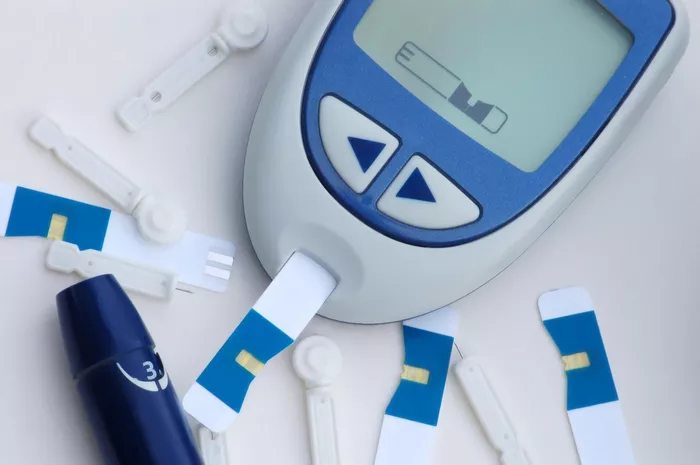Blood glucose levels are a crucial indicator of metabolic health. They fluctuate throughout the day depending on food intake, physical activity, stress levels, and overall health. Random blood glucose testing is a commonly used method to assess blood sugar levels at any given time of the day, regardless of when the last meal was consumed. But what exactly is considered a “normal” random blood glucose level? And why is it important to monitor blood sugar levels regularly? This article explores the normal ranges, significance, and implications of random blood glucose measurements, particularly for people with diabetes.
Understanding Blood Glucose and Its Regulation
Blood glucose (also known as blood sugar) refers to the concentration of glucose present in the bloodstream. Glucose is the body’s primary source of energy and is derived from carbohydrates in food. The body regulates blood sugar levels through a complex interplay of hormones, primarily insulin and glucagon, which are produced by the pancreas.
Insulin: Released when blood sugar levels are high, insulin facilitates the uptake of glucose into cells, where it is either used for energy or stored for future use.
Glucagon: Released when blood sugar levels are low, glucagon triggers the release of stored glucose from the liver to maintain normal blood glucose levels.
When this balance is disrupted, it can lead to conditions such as hypoglycemia (low blood sugar), hyperglycemia (high blood sugar), prediabetes, or diabetes.
What Is Random Blood Glucose Testing?
A random blood glucose test is a blood sugar measurement taken at any time of the day, regardless of food intake. Unlike fasting blood glucose tests, which require an 8-hour fasting period, random tests provide insight into how blood sugar fluctuates throughout the day under real-world conditions.
Why Is Random Blood Glucose Testing Important?
Random blood glucose testing is used for:
Screening for diabetes: A high random blood glucose level may indicate diabetes and warrant further testing.
Monitoring diabetes control: Individuals with diabetes can use random blood glucose readings to understand their glucose trends and adjust their diet, exercise, or medication accordingly.
Identifying hyperglycemia or hypoglycemia: Severe fluctuations in blood sugar can be dangerous and require immediate medical intervention.
Normal Random Blood Glucose Levels
What Is Considered a Normal Random Blood Glucose Level?
For a healthy individual without diabetes, a normal random blood glucose level typically falls within the range of:
- 70 to 140 mg/dL (3.9 to 7.8 mmol/L)
However, the level can vary based on several factors, including recent meals, physical activity, and stress.
A random blood glucose level of 200 mg/dL (11.1 mmol/L) or higher is a strong indicator of diabetes, particularly if accompanied by symptoms such as increased thirst, frequent urination, fatigue, and blurred vision. In such cases, further testing, such as an HbA1c test or an oral glucose tolerance test (OGTT), is recommended to confirm the diagnosis.
Factors Affecting Random Blood Glucose Levels
Blood glucose levels fluctuate throughout the day based on various factors, including:
1. Meal Timing and Composition
Carbohydrate-rich foods cause a rapid rise in blood sugar, whereas protein and fiber slow glucose absorption, leading to a more gradual increase.
2. Physical Activity
Exercise helps lower blood glucose levels by increasing insulin sensitivity and promoting glucose uptake by muscles.
3. Stress and Hormones
Stress hormones like cortisol and adrenaline can cause blood sugar spikes by stimulating glucose production in the liver.
4. Medications
Certain medications, such as corticosteroids and diuretics, can raise blood sugar levels, while insulin and some oral diabetes medications lower them.
5. Illness and Infections
Fever, infections, and other illnesses can cause temporary increases in blood glucose levels.
6. Alcohol and Hydration Levels
Alcohol can either raise or lower blood sugar levels depending on the type and amount consumed. Dehydration can also lead to higher blood glucose readings.
How to Maintain Normal Blood Glucose Levels
To keep blood glucose levels within a normal range, consider the following lifestyle modifications:
1. Follow a Balanced Diet
- Focus on complex carbohydrates such as whole grains, vegetables, and legumes.
- Include lean proteins and healthy fats to slow glucose absorption.
- Avoid excessive sugary foods and refined carbs.
2. Exercise Regularly
- Aim for at least 150 minutes of moderate-intensity exercise per week.
- Engage in strength training and aerobic exercises to enhance insulin sensitivity.
3. Monitor Blood Sugar Regularly
- Use a glucometer or continuous glucose monitor (CGM) to track glucose levels and identify patterns.
4. Manage Stress Levels
- Practice mindfulness, meditation, or yoga to reduce stress-induced glucose spikes.
5. Take Medications as Prescribed
- If you have diabetes, follow your healthcare provider’s recommendations for medications and insulin therapy.
When to See a Doctor
Seek medical attention if you experience:
- Persistent blood glucose levels above 200 mg/dL (11.1 mmol/L)
- Symptoms of hypoglycemia (shakiness, dizziness, confusion, sweating)
- Unexplained weight loss, excessive thirst, and frequent urination
Conclusion
A normal random blood glucose level generally falls between 70 and 140 mg/dL (3.9 to 7.8 mmol/L) for non-diabetics. Values exceeding 200 mg/dL (11.1 mmol/L) suggest possible diabetes and require further testing. Maintaining a balanced diet, exercising regularly, and monitoring blood sugar levels can help keep glucose within a healthy range. If you have concerns about your blood glucose levels, consult a healthcare professional for proper evaluation and management.
Related topics:
What is High for a Glucose Test During Pregnancy?


























